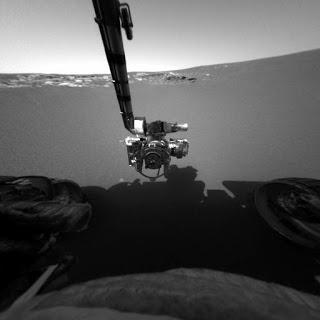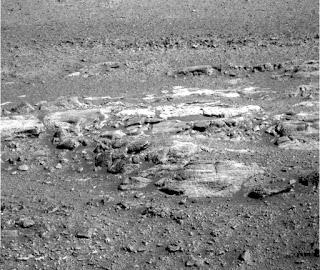
Original image at images-assets.nasa.gov/image/PIA05193/PIA05193~orig.jpg
In June 2003, a pair of rovers were launched from Cape Canaveral in Florida, headed for Mars. Headed into the hostile atmosphere of the red planet, the team behind the rovers had hoped for a mission length of 90 days for each rover. They landed on Mars in January 2004.
One of the rovers, Spirit, went on to operate for 20 times its planned duration, with communication finally stopping in March 2010, after it had been stuck in place, wheels trapped in soft soil for almost a year.
The other rover, Opportunity, is still functioning today.
5000 days on, Opportunity has traveled 28 miles, encountered extramartian meteorites, craters, and contributed hugely to its mission of finding evidence of the past existence of water on Mars.
I find it fascinating to think that, no matter how well planned, a vehicle built in 2003, sent through space, landed on another planet, and is still operating (albeit with some limitations - due to partially faulty memory banks, the rover has been configured to run in a "RAM-only" mode, similar in a way to a computer operating without its hard drive. This requires the rover to communicate high priority information immediately, as it can't store anything when turned off).
Here's to you, Opportunity.

Image taken by Opportunity's panoramic camera on day 5,000 of its operation
